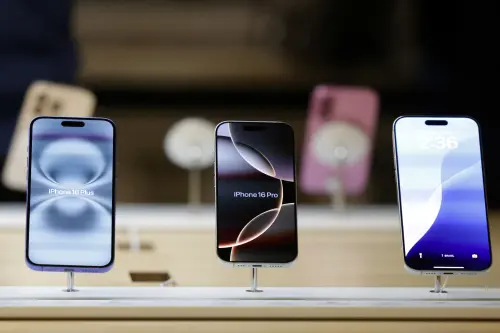Introduction
The recent imposition of tariffs by the U.S. government is expected to significantly increase the price of iPhones, impacting consumer costs dramatically.Context
U.S. President Donald Trump has enacted tariffs on various countries, particularly targeting imports from China, which plays a crucial role in the production of consumer electronics. Analysts anticipate that if these tariffs remain, Apple might impose price increases of 30% to 40% on its products.Developments
Most iPhones are still manufactured in China, which is currently facing a 54% tariff. This situation forces Apple to make a difficult decision: either absorb the increased costs or pass them on to the consumers. Following the tariff announcement, Apple’s stock experienced a decline of more than 8%, marking one of its worst trading days since September 2020.Apple has a substantial annual sales figure of over 220 million iPhones, with its largest markets being the U.S., China, and Europe. The recently launched iPhone 16 model starts at $799, but projections suggest that it could rise to as much as $1,142 if the company implements the expected 43% increase. For higher-end models like the iPhone 16 Pro Max, currently priced at $1,599, the cost could soar to nearly $2,300 under the same conditions.
Previously, Apple had managed to secure exemptions for some products during Trump's first term, but this time no exemptions have been granted. Analysts note that the current tariff situation is developing contrary to expectations that Apple would be minimally impacted.
Moreover, sales figures indicate that iPhone demand has been declining in major markets. New features associated with Apple Intelligence, which include summarizing notifications and providing AI assistance, have not sparked notable consumer enthusiasm, leading to concerns about whether the latest iPhone models will motivate consumers to upgrade.
Angelo Zino, an equity analyst, highlights the challenge Apple faces, estimating it could only pass on 5% to 10% of the cost increases. He suggests that any significant price changes are likely to be postponed until the anticipated launch of the iPhone 17 in the fall.
Even with some production shifting to countries like Vietnam and India, those locations are also subject to tariffs, with Vietnam's tariff set at 46% and India's at 26%. According to Counterpoint Research, Apple would need to implement at least a 30% average price increase to counterbalance these import duties.
A significant price raise could dampen consumer demand for the iPhone, potentially benefiting competitors like Samsung Electronics, which faces lower tariffs compared to those imposed on Chinese imports. Analysts from Rosenblatt Securities caution that these developments could lead to substantial losses for Apple, potentially costing the company as much as $40 billion. Negotiations involving Apple, China, and the White House are expected to ensue as this situation unfolds.
